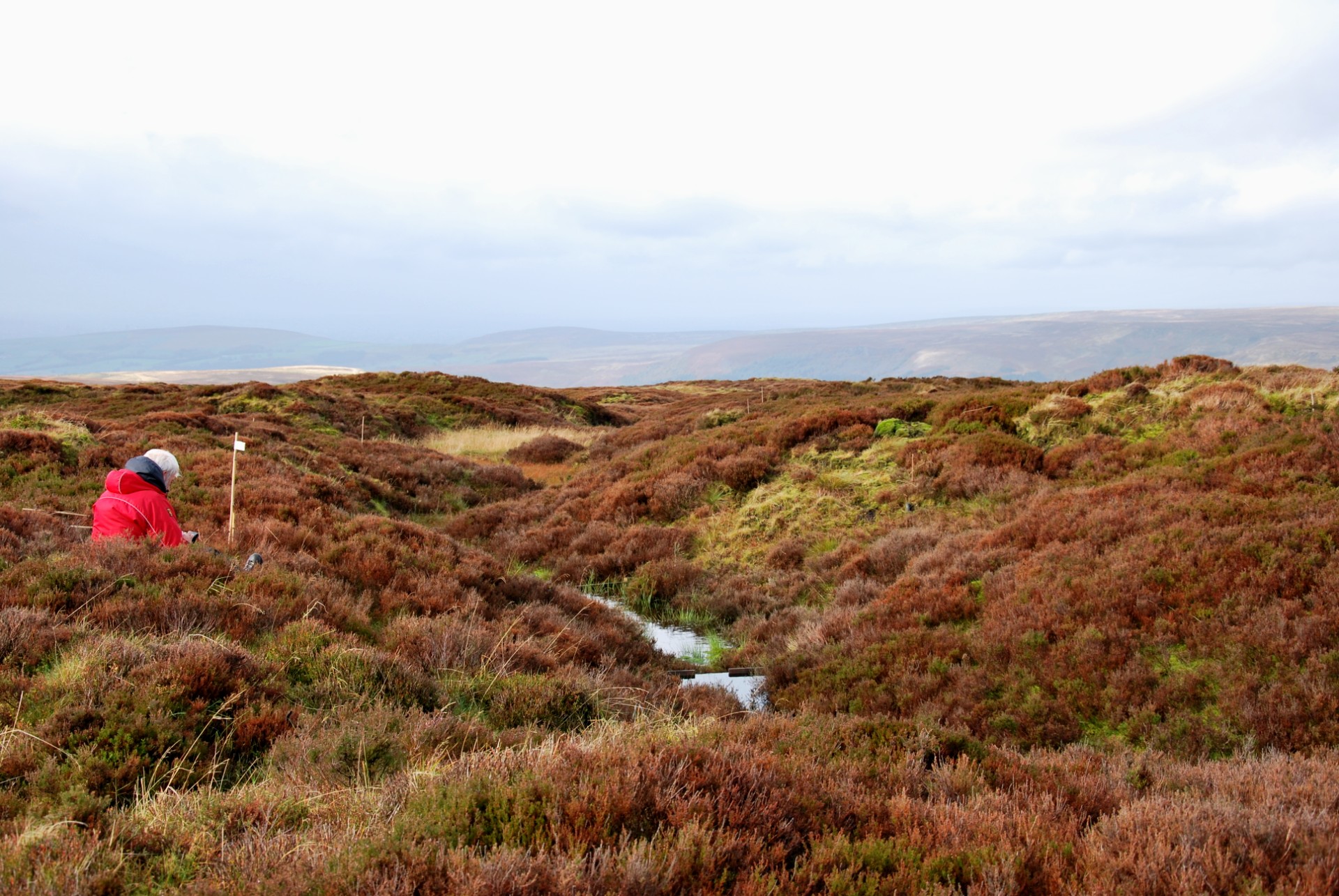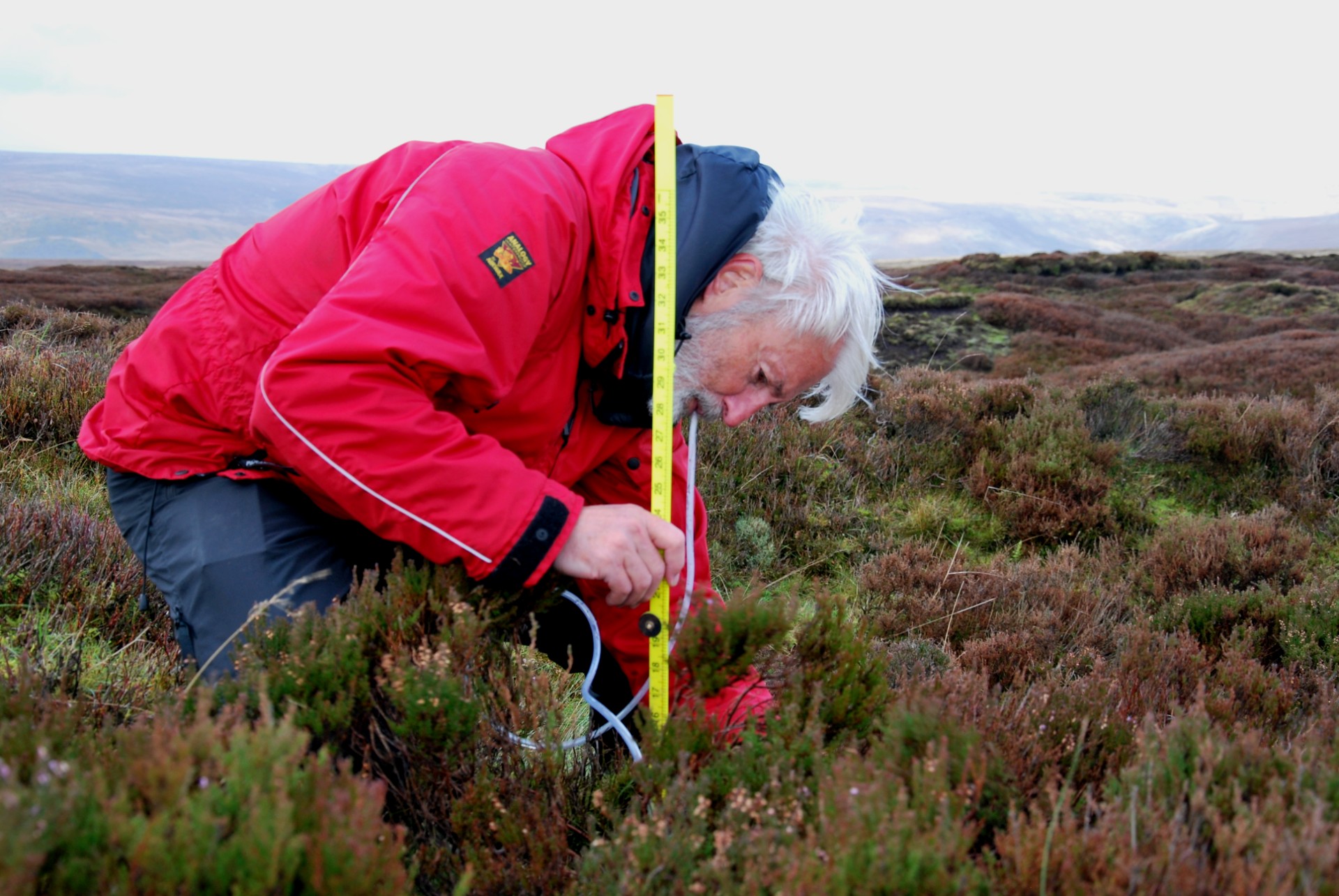20 November 2019
The restoration work that Moors for the Future Partnership do is underpinned by research and monitoring carried out by a team of dedicated scientists and volunteers – often battling the elements to keep our datasets accurate, complete and up-to-date.

A key event in the research and monitoring calendar that is currently underway, is the annual 12-week dipwell campaign to measure the water table. Dipwells are small wells set up in clusters across the moors.
In a healthy state, many of the moors in the Peak District and South Pennines would be much wetter than they are, with water stored in the peat to a level (known as the water table) that is at, or very near, to the surface. A high water table is critical for both blanket bog to become active (growing peat rather than losing it) and to help reduce fire risk.
Following the 2018 drought, this is a key monitoring year, so capturing a strong dataset this year is really valuable – and presents its own challenges in light of the recent weather!
Every year, we measure the depth of the water table in hundreds of locations as part of the dipwell campaign, ranging from Rishworth and Turley Holes in the north to the more southerly Kinder Scout and Bleaklow. The dipwells are checked manually by a team member who blows into a plastic tube as it is lowered into the well. When the tube reaches the water, bubbling is heard, and the resulting depth is recorded. This approach might seem low-tech but it has been proven to be the most reliable!

We’ve been monitoring water tables in this way since 2010 and results have shown a slow and steady rise in water tables across the moors as a result of our restoration work. It’s the long-term changes that we’re most interested in, so every extra year of monitoring is extremely valuable.
Thanks to the ongoing dedication of the Partnership’s volunteers, the 2019 dipwell campaign is well underway. Our resilient, committed and hardy team of volunteers are key to helping our scientists manage monitoring sites across the moors to ensure the full suite of monitoring continues. Watch this space for the results.